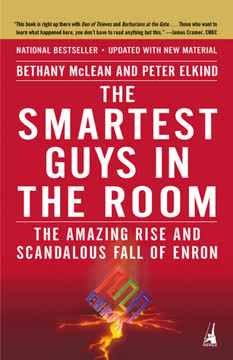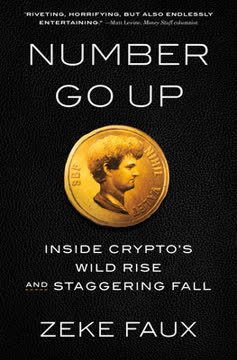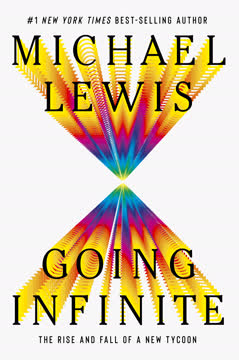Key Takeaways
1. Two brilliant minds collaborate to revolutionize decision-making theory
"We were sharing a mind."
Unlikely partnership. Daniel Kahneman and Amos Tversky, two Israeli psychologists with vastly different personalities and backgrounds, formed an extraordinary collaboration in the 1970s. Kahneman, a Holocaust survivor with a penchant for self-doubt, and Tversky, a confident and charismatic native Israeli, found in each other intellectual soulmates. Their partnership began at Hebrew University and continued through their move to North America.
Revolutionary ideas. Together, they challenged the prevailing economic theories of rational decision-making. They introduced the concept of cognitive biases - systematic errors in human judgment that deviate from rationality. Their work combined psychology with economics, creating a new field of behavioral economics. Through a series of ingenious experiments, they demonstrated that people often make decisions based on intuition rather than careful analysis, leading to predictable errors in judgment.
2. Heuristics and biases: Uncovering systematic errors in human judgment
"People do not follow the calculus of chance or the statistical theory of prediction. Instead, they rely on a limited number of heuristics which sometimes yield reasonable judgments and sometimes lead to severe and systematic errors."
Mental shortcuts. Kahneman and Tversky identified several heuristics, or mental shortcuts, that people use to make judgments under uncertainty:
- Representativeness: Judging the probability of something based on how closely it resembles our mental model of that thing
- Availability: Estimating the likelihood of an event based on how easily examples come to mind
- Anchoring: Relying too heavily on the first piece of information encountered when making decisions
Biases in action. These heuristics, while often useful, can lead to significant errors in judgment. For example, people tend to overestimate the likelihood of rare but vivid events (like plane crashes) due to the availability heuristic. The representativeness heuristic can cause people to ignore base rates and other statistical information when making predictions. By identifying these biases, Kahneman and Tversky provided a framework for understanding and potentially correcting flawed decision-making processes.
3. The power of framing: How presentation shapes decision-making
"People do not choose between things. They choose between descriptions of things."
Context matters. Kahneman and Tversky demonstrated that the way a problem is framed can dramatically influence decision-making. They showed that people respond differently to the same information depending on how it is presented, particularly when it comes to gains and losses.
The Asian disease problem. In their famous "Asian disease problem" experiment, they presented two groups with identical scenarios about a disease outbreak, but framed the outcomes differently:
- When outcomes were framed as lives saved, people preferred the certain option
- When framed as lives lost, people preferred the risky option
This demonstrated that people are risk-averse when considering gains, but risk-seeking when considering losses, even when the underlying probabilities are identical.
4. Prospect theory: A new model for understanding risk and value
"The greater sensitivity to negative rather than positive changes is not specific to monetary outcomes. It reflects a general property of the human organism as a pleasure machine."
Challenging utility theory. Prospect theory, developed by Kahneman and Tversky, offered a more psychologically realistic alternative to expected utility theory, the dominant model of decision-making under risk.
Key elements of prospect theory:
- Reference point: People evaluate outcomes relative to a reference point, not absolute values
- Loss aversion: Losses hurt more than equivalent gains feel good
- Diminishing sensitivity: The impact of changes diminishes with distance from the reference point
- Probability weighting: People overweight small probabilities and underweight medium and large probabilities
This theory explained many real-world phenomena that traditional economic models struggled with, such as why people simultaneously buy insurance and lottery tickets.
5. The isolation effect: Separating decisions from their broader context
"Decisions are often made by focusing on the distinctive components of competing options while disregarding components that they share."
Narrow framing. The isolation effect describes how people tend to make decisions by focusing on the unique aspects of a choice while ignoring elements common to all options. This can lead to inconsistent preferences and choices that don't align with overall goals.
Implications. This effect has significant implications for how people evaluate risks and make decisions in various contexts:
- Financial decisions: People may focus on short-term gains/losses rather than long-term portfolio performance
- Health choices: Evaluating treatment options based on specific differences rather than overall outcomes
- Policy decisions: Focusing on immediate impacts rather than broader, systemic effects
Understanding the isolation effect can help design better decision-making processes and policies that encourage more holistic thinking.
6. Challenging rational choice theory: Evidence of human irrationality
"A theory of vision cannot be faulted for predicting optical illusions. Similarly, a descriptive theory of choice cannot be rejected on the grounds that it predicts 'irrational behavior' if the behavior in question is, in fact, observed."
Systematic irrationality. Kahneman and Tversky's work provided compelling evidence that humans often behave in ways that violate the assumptions of rational choice theory, the dominant paradigm in economics at the time.
Key findings:
- Intransitivity: People's preferences can be inconsistent (preferring A to B, B to C, but C to A)
- Violation of independence: Introducing irrelevant alternatives can change preferences
- Framing effects: Equivalent options chosen differently based on presentation
- Overconfidence: Systematic overestimation of knowledge and abilities
These findings challenged the foundations of many economic models and policy prescriptions based on assumptions of rational behavior, paving the way for more psychologically informed approaches to economics and decision-making.
7. The impact of Kahneman and Tversky's work across disciplines
"It was like a stroke of genius, showing you could do it. Math with psychology in it."
Interdisciplinary influence. The work of Kahneman and Tversky had a profound impact far beyond psychology and economics:
- Medicine: Improving diagnostic decision-making and patient communication
- Law: Understanding jury decision-making and eyewitness testimony
- Political science: Analyzing voting behavior and policy preferences
- Finance: Explaining market anomalies and investor behavior
- Management: Enhancing organizational decision-making processes
Their ideas influenced fields as diverse as public health, environmental policy, and artificial intelligence. This broad impact demonstrates the fundamental nature of their insights into human cognition and decision-making.
8. Exploring the rules of the human imagination and counterfactual thinking
"Reality is a cloud of possibility, not a point."
Mental simulation. Kahneman explored how people create alternative realities in their minds, both when imagining future scenarios and when thinking about how past events could have turned out differently.
Key insights:
- People tend to undo events by changing exceptional rather than routine aspects
- Recent events are easier to mentally undo than distant ones
- There's a bias towards undoing actions rather than inactions
- The ease of imagining alternatives affects emotions like regret and relief
Understanding these "rules of undoing" has implications for how people cope with trauma, make decisions, and attribute blame or credit for outcomes.
9. The conjunction fallacy: A startling demonstration of illogical reasoning
"Because the conjunction fallacy is easy to expose, people who committed it are left with the feeling that they should have known better."
Logical violation. The conjunction fallacy, demonstrated through the famous "Linda problem," shows how people often judge a specific condition as more probable than a general one, violating basic laws of probability.
Implications:
- Highlights the power of representativeness over logical reasoning
- Demonstrates how easily intuitive judgments can lead us astray
- Raises questions about human rationality and decision-making abilities
- Suggests the need for more careful, analytical thinking in important decisions
This finding was particularly striking because it persisted even when the logical error was made explicit, underscoring the strength of intuitive judgments over formal reasoning.
10. From collaboration to competition: The evolution of a groundbreaking partnership
"I have lived in some fear that he might get it alone. That would have been a disaster, and I couldn't have coped very elegantly."
Partnership dynamics. The collaboration between Kahneman and Tversky was extraordinarily productive but also fraught with tension. Their different personalities and approaches complemented each other initially but eventually led to strain.
Key factors in the partnership's evolution:
- Geographical separation after moving to North America
- Unequal recognition, with Tversky receiving more acclaim
- Diverging research interests and approaches
- Personal life changes, particularly Kahneman's remarriage
Despite the challenges, their collaboration produced groundbreaking work that continues to influence multiple fields decades later. The story of their partnership illustrates both the power of intellectual collaboration and its potential pitfalls.
Last updated:
FAQ
What's The Undoing Project about?
- Exploration of Human Judgment: The Undoing Project by Michael Lewis explores the pioneering work of psychologists Daniel Kahneman and Amos Tversky, focusing on how people make decisions under uncertainty.
- Friendship and Collaboration: The book highlights the deep friendship and collaboration between Kahneman and Tversky, which led to significant advancements in psychology and behavioral economics.
- Impact on Various Fields: Their research has influenced multiple fields, including economics, medicine, and public policy, reshaping our understanding of human behavior in real-world contexts.
Why should I read The Undoing Project?
- Understanding Decision-Making: The book provides insights into cognitive biases that affect everyday decisions, helping readers recognize the limitations of their own judgment.
- Engaging Narrative: Michael Lewis presents complex psychological concepts in a compelling narrative style, intertwining personal stories with scientific exploration.
- Broader Implications: It encourages reflection on how psychological principles apply to various aspects of life, prompting critical thinking about rationality and the human experience.
What are the key takeaways of The Undoing Project?
- Human Irrationality: Kahneman and Tversky demonstrated that humans are not always rational decision-makers, often influenced by cognitive biases and heuristics.
- Heuristics and Biases: The book discusses mental shortcuts like representativeness and availability, which can lead to systematic errors in judgment.
- Impact of Context: Context significantly affects how we perceive information and make decisions, emphasizing the role of mental models in shaping our understanding.
How did Kahneman and Tversky's friendship influence their work in The Undoing Project?
- Collaborative Synergy: Their friendship created a unique environment for challenging and building upon each other's ideas, leading to groundbreaking insights.
- Complementary Strengths: Kahneman's introspective nature and Tversky's outgoing personality balanced their research, enhancing their understanding of cognitive biases.
- Shared Vision: Their personal connection deepened their commitment to exploring human irrationality, driving their research forward.
What is the representativeness heuristic in The Undoing Project?
- Definition: The representativeness heuristic is a mental shortcut used to judge the probability of an event based on its similarity to a typical case.
- Example: The Linda problem illustrates how people ignore base rates and logical reasoning in favor of representativeness, leading to errors in judgment.
- Implications: This heuristic can distort decision-making in various contexts, causing individuals to overlook statistical realities.
What is the availability heuristic in The Undoing Project?
- Definition: The availability heuristic refers to judging the likelihood of events based on how easily examples come to mind, often leading to overestimations.
- Illustrative Experiment: Kahneman and Tversky showed that people often believe there are more words starting with a specific letter than those with the same letter in the third position.
- Real-World Impact: This heuristic can skew perceptions of risk and probability, influencing decisions in areas like public policy and personal finance.
What is loss aversion as described in The Undoing Project?
- Core Concept: Loss aversion is the principle that losses loom larger than gains, meaning the pain of losing is more impactful than the pleasure of gaining.
- Practical Example: People prefer avoiding a loss of $100 over acquiring a gain of $100, demonstrating that fear of loss drives behavior more than desire for gain.
- Implications for Decision-Making: Understanding loss aversion can help design better decision-making frameworks, considering emotional responses in high-stakes situations.
What are the framing effects discussed in The Undoing Project?
- Definition: Framing effects occur when the presentation of information influences decision-making, leading to different choices based on framing.
- Asian Disease Problem: This example shows how framing can manipulate perceptions of risk and benefit, with participants choosing differently based on how options are presented.
- Significance in Real Life: Framing effects have implications in marketing, public policy, and healthcare, highlighting the need for effective communication strategies.
How did The Undoing Project impact the field of behavioral economics?
- Foundation of Behavioral Economics: Kahneman and Tversky's work challenged traditional economic assumptions, integrating psychological insights into economic models.
- Policy Implications: Their findings have been applied in public policy to design better decision-making frameworks, such as nudges that guide individuals toward better choices.
- Changing Perspectives: Their research prompted economists and policymakers to consider psychological factors, leading to more effective strategies for addressing societal issues.
What is the "Law of Small Numbers" discussed in The Undoing Project?
- Definition: The "Law of Small Numbers" refers to the belief that small samples can accurately represent larger populations, often leading to erroneous conclusions.
- Implications for Decision-Making: People misjudge probabilities with small samples, resulting in overconfidence and significant errors in fields like finance and medicine.
- Real-World Examples: The book illustrates how this law manifests in everyday decision-making, emphasizing the importance of understanding sample sizes.
What is the simulation heuristic in The Undoing Project?
- Definition: The simulation heuristic involves creating alternative scenarios to evaluate outcomes, often leading to feelings of regret or frustration.
- Counterfactual Thinking: This heuristic is related to counterfactual thinking, where individuals consider "what if" scenarios to understand past events.
- Emotional Impact: It affects emotional responses, as people feel more regret for outcomes that were close to being different, influencing decision-making processes.
What are the best quotes from The Undoing Project and what do they mean?
- "Doubt is not a pleasant condition, but certainty is an absurd one.": This quote highlights the discomfort of uncertainty and the folly of overconfidence in judgments.
- "Your mind needs to be in a constant state of defense against all this crap that is trying to mislead you.": Reflects the need to be aware of cognitive biases that cloud judgment.
- "Reality is a cloud of possibility, not a point.": Emphasizes the complexity of decision-making and the multitude of factors shaping our choices.
Review Summary
The Undoing Project explores the collaboration between psychologists Daniel Kahneman and Amos Tversky, whose work revolutionized behavioral economics. Lewis delves into their friendship, research, and impact on various fields. While praised for its storytelling and insights, some reviewers found the book unfocused or overly biographical. Critics appreciated Lewis's ability to make complex ideas accessible, though some wished for more emphasis on the science. The book's emotional depth surprised many readers, particularly the portrayal of Kahneman and Tversky's relationship and its eventual breakdown.
Similar Books










Download PDF
Download EPUB
.epub digital book format is ideal for reading ebooks on phones, tablets, and e-readers.













